
The complete restaurant glossary for 2022
Restaurant professionals are expected to know & remember a lot of things. From food prep instructions, to table numbers, to kitchen lingo, to restaurant delivery & online ordering terms. As your partner in all things delivery, the team at Otter has curated a glossary of every delivery-related term restaurateurs need to know in 2022. This glossary is easy to understand, and designed to be printed & shared, so you can ensure your team is up-to-date on all the relevant delivery lingo and train new team members with ease.
In this guide, well cover all the terms you need to know in regards to orders, your kitchen, restaurant operations, restaurant logistics, restaurant finance, and restaurant innovation. We made sure to keep the definitions short & sweet so you feel comfortable using the terms in your everyday life moving forward.
We've broken the terms into 6 key categories:
- Orders
- Kitchen
- Operations
- Logistics
- Finance
- Innovation
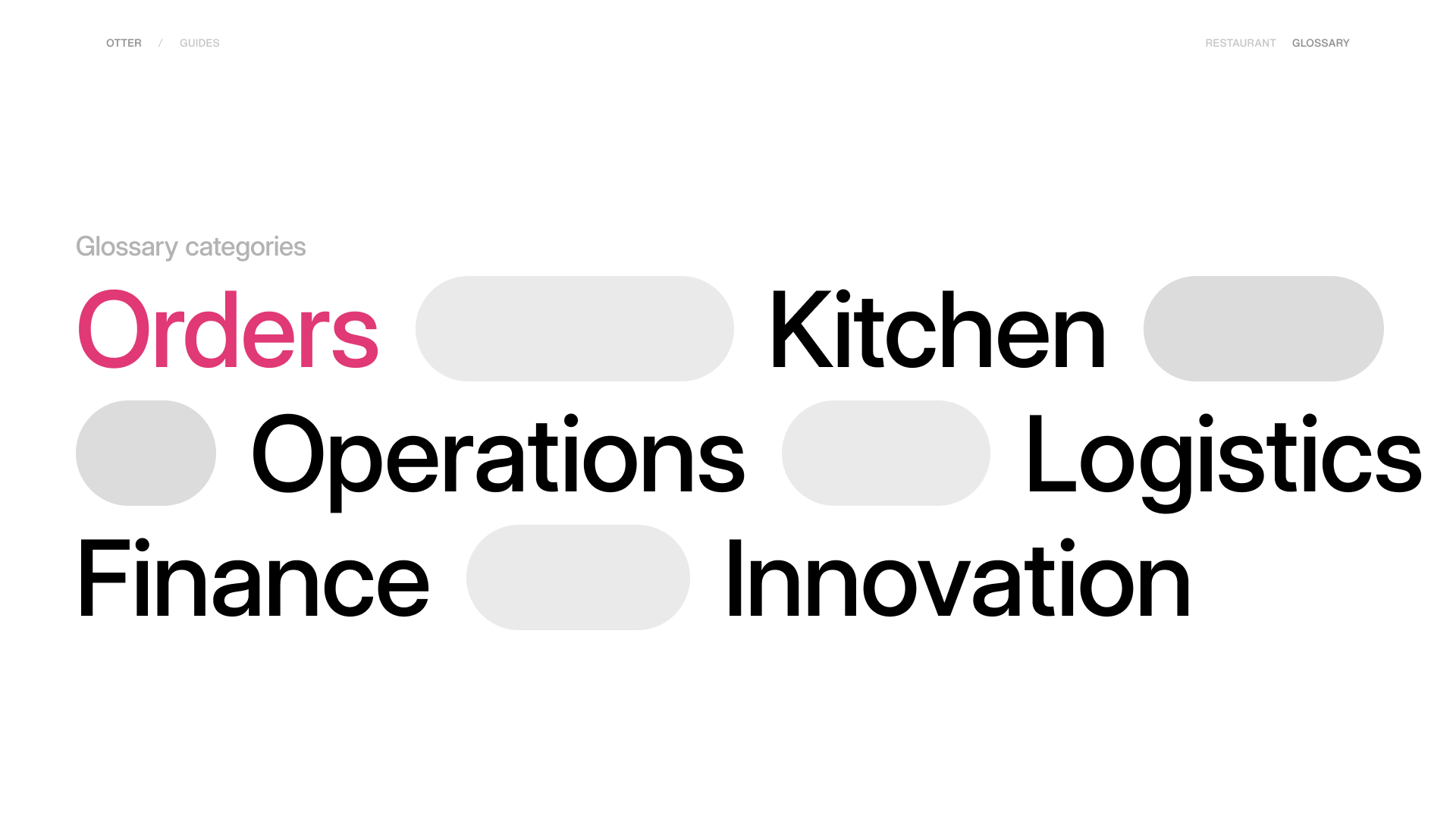

Kitchen specific restaurant terminology
- Holding: Holding is the temperature and time requirements for specific item. It’s critical for your team to know the proper temperature to hold a particular menu item to ensure that the food you prepare is safe for your customers to eat.
- Mise en place: “To put in place or gather” in French, mise en place refers to the act of getting your ingredients, pans, tools ready before the food preparation begins.
- Inventory: The literal definition of inventory refers to anything within your restaurant that costs the business money, but when restaurateurs refer to inventory, they are generally referring to the ingredients coming in and going out of your kitchen.
- Shelf life: The length of time for which a particular ingredient or item remains usable. When the shelf life is up, an ingredient is effectively expired.
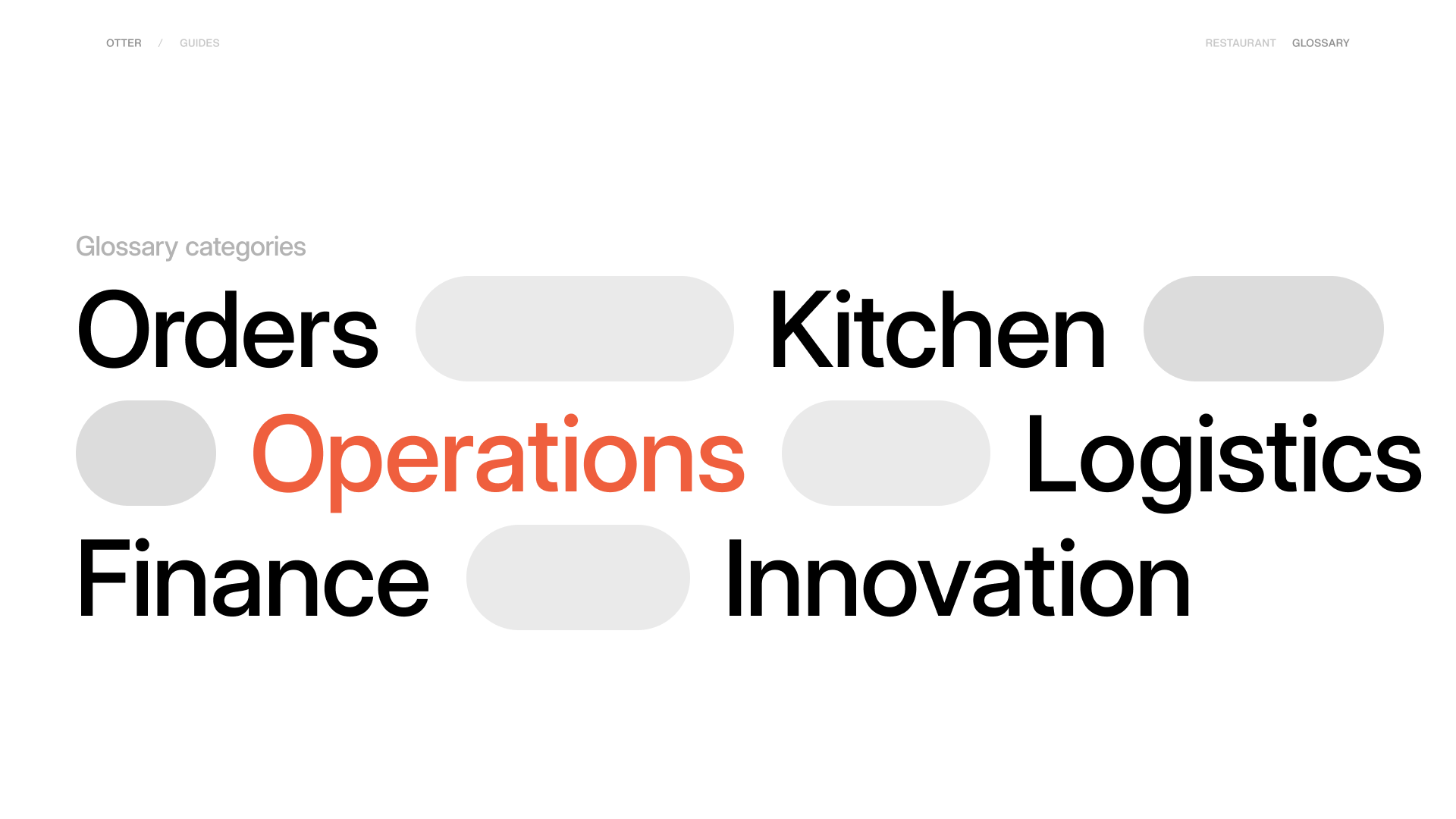
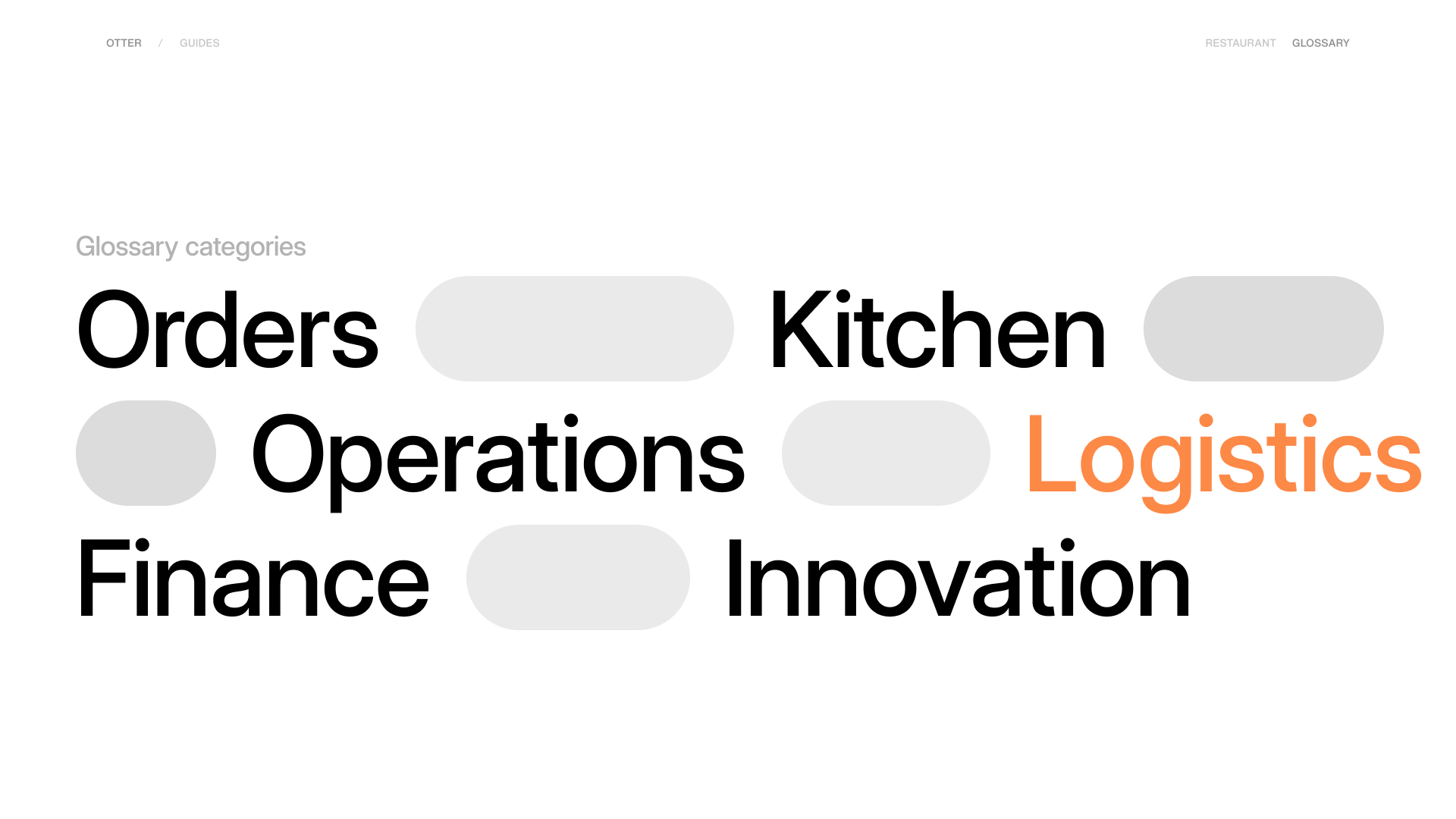
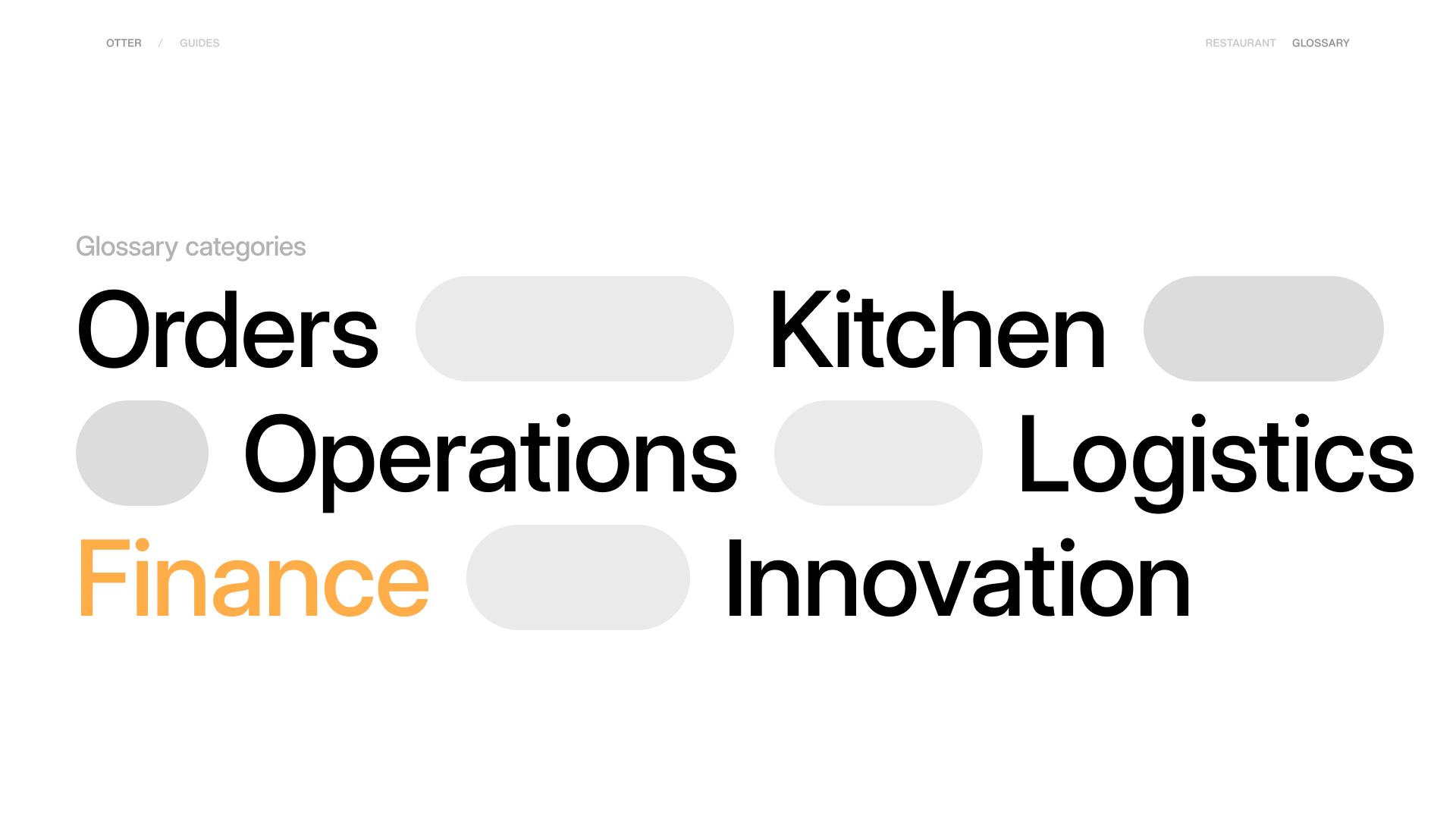
Financial restaurant terminology
- Promotions: A deal or discount within the delivery apps designed to increase the number of orders you receive. When running promotions with an app like Uber Eats, you are usually expected to cover the cost of the discount + a small fee to the third party app company. While these fees can add up, the increased orders received from promotions can still result in a higher profit.
- Cash flow: the amount of cash being transferred into and out of your restaurant. Cash inflow consists of the money received from customers and other financing sources like loans.
- Commission: [In delivery] the amount you’re required to pay a delivery app for being listed & selling on their platform. When it comes to third party apps, commission rates for restaurants generally fall in the 15-30% range.
- Cost of goods: Or COGS, is the total cost of all the ingredients you must use to prepare everything on your menu (down to the garnish of cilantro or ketchup packet).
- Net profit margin: Your business’ profitability ratio – how much revenue you earn compared to how much it costs you to earn that revenue.
- Bottom line: Also known as net income, the bottom line is what your restaurant makes after all of your expenses have been deducted from your total revenue.
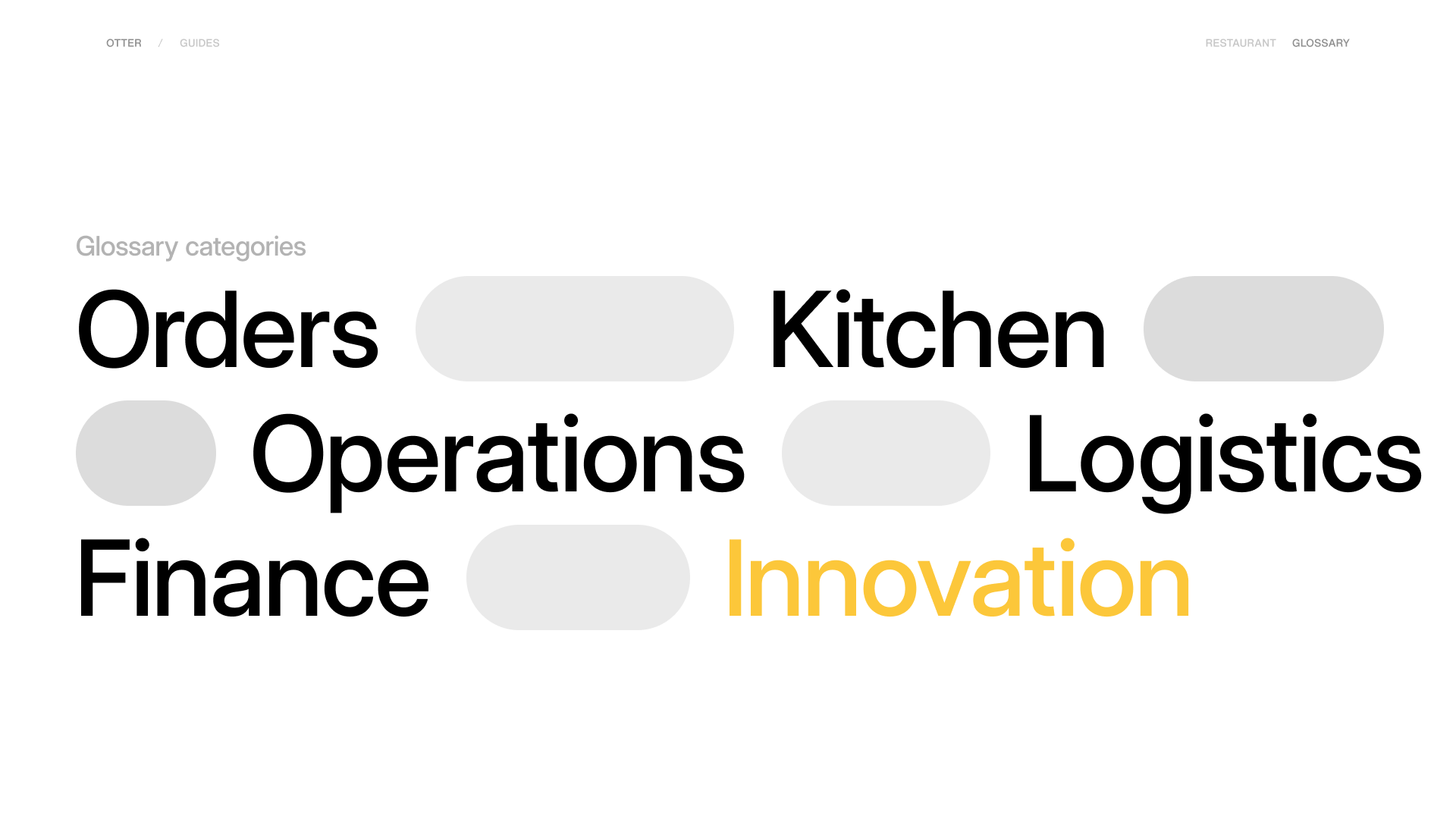
You're now a restaurant-lingo expert!
If you made it to this point, you’re well on your way to becoming a walking restaurant encyclopedia. Remember to print or share this glossary with your team to ensure everyone in your restaurant is speaking the same language. Get started with Otter today!







